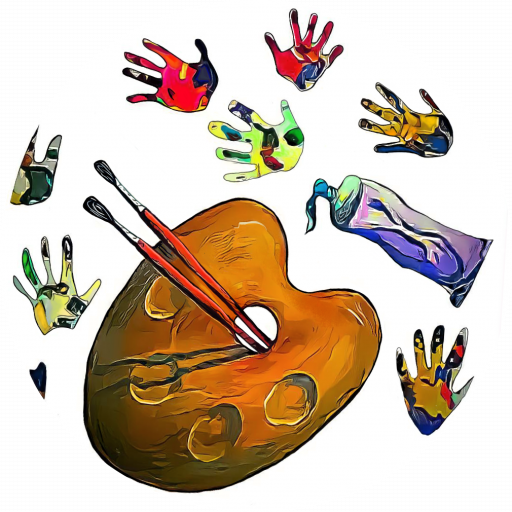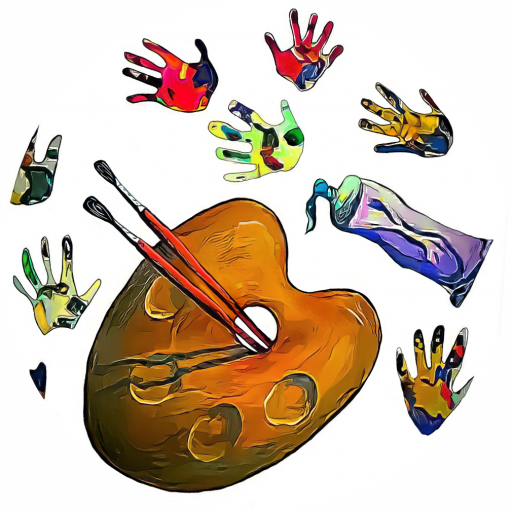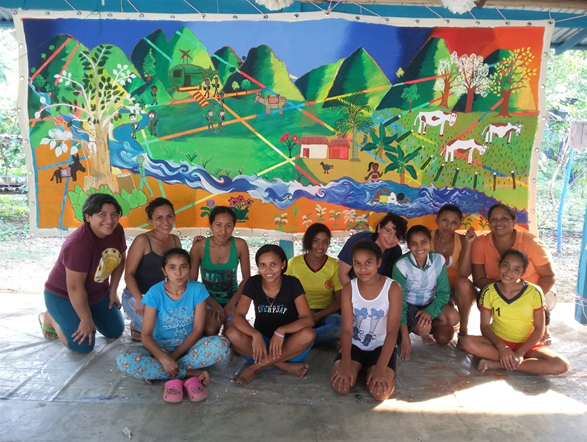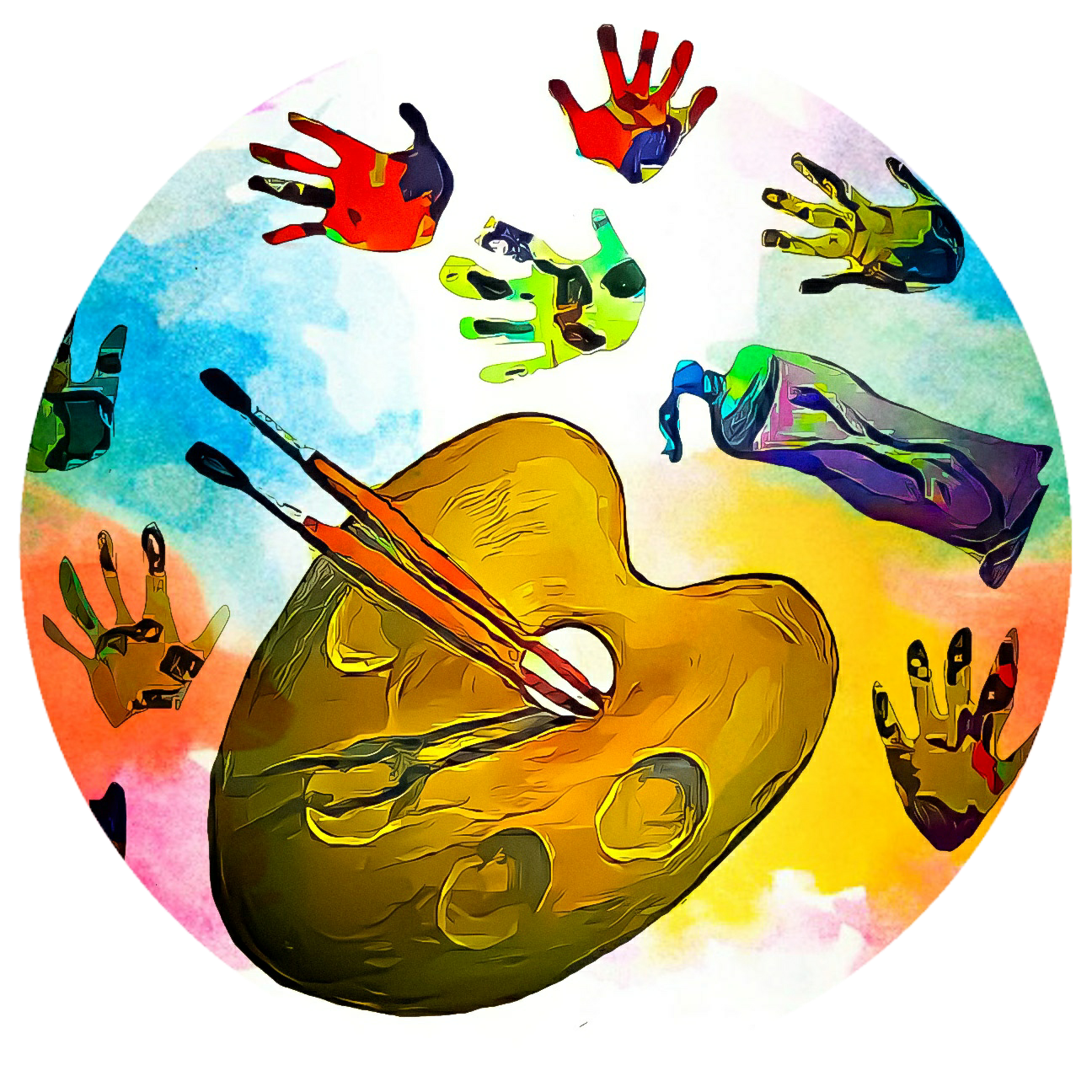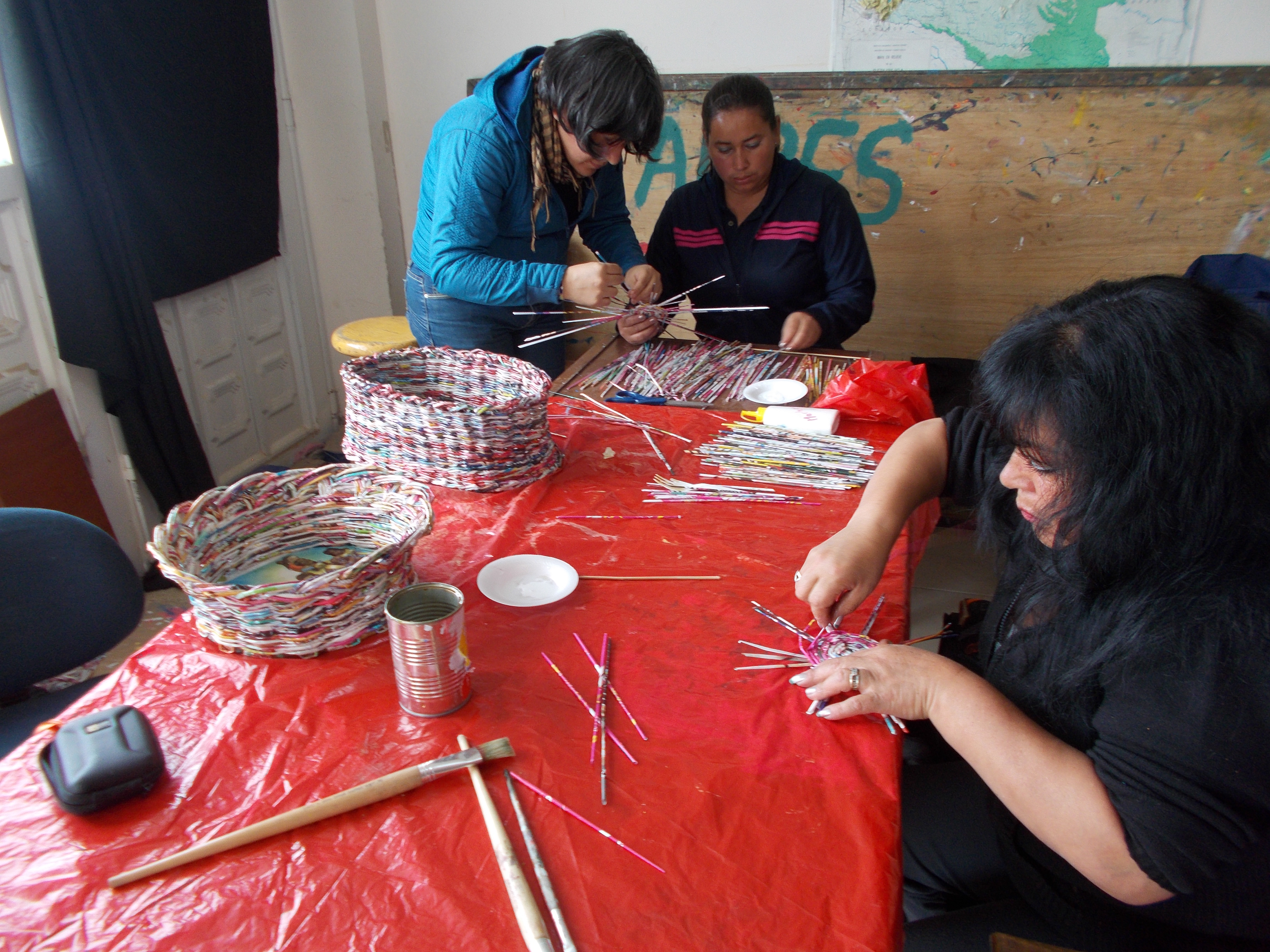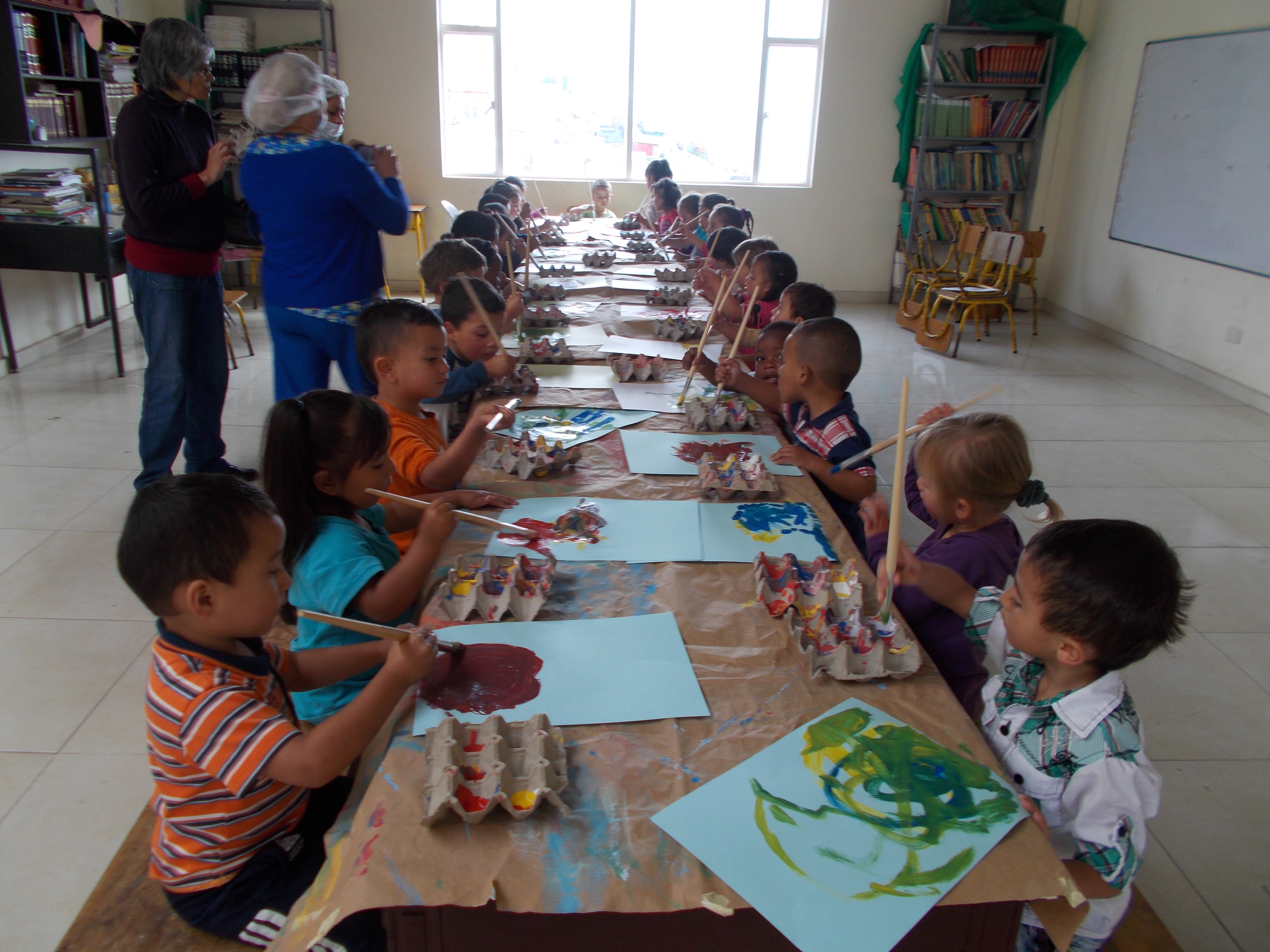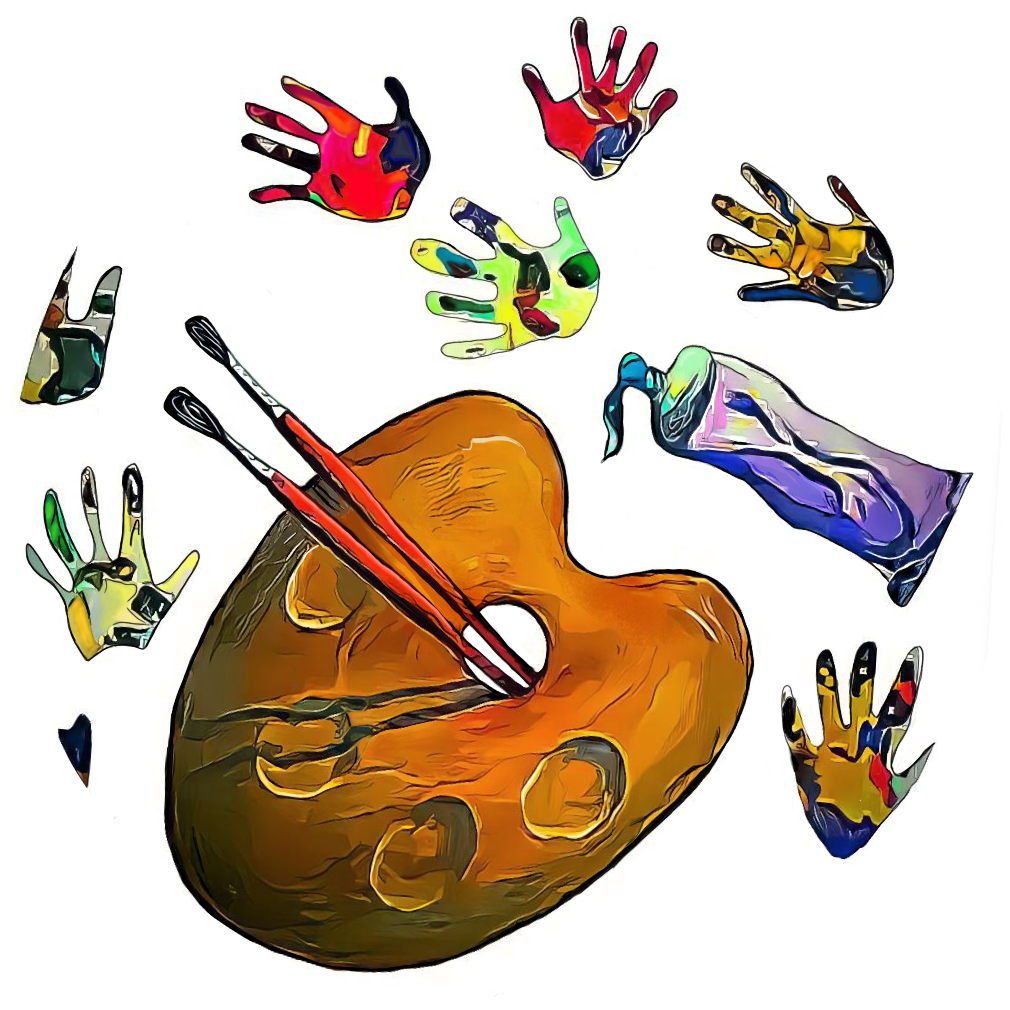Buenos Aires, Argentina.
Several weeks ago, I arrived to Argentina. I left Perquin on November 22 yet, the mountains of Morazan, the purple light, the sounds of wind and trees and the faces of beloved people are with me at all times while I walk around the streets of this magnificent city of Buenos Aires.
I took these few weeks to rest, to read, to visit friends, to see art in museums and galleries. It is not untrue to say that I have never worked so hard in my life as I did in Perquin. I needed the rest. Since March until November of 2005, each day would start at 5:30 am. populated by art production for more than 10 hours. Perhaps, even more than that, who knows? It is hard to calculate! Each evening, I went back to my house demolished by tiredness but filled with happiness and fulfillment.
In this last report of the year, taking distance geographically and emotionally, I will attempt to evaluate what happened in Perquin in this year of 2005.
How to start????
I would like to begin by saying that the community of Perquin in this first year of the creation of the School of Art and Open Studio has welcomed art and creativity, comfortably, as another aspect of their daily life and concerns. That, in itself, is quite remarkable considering the economic crisis that El Salvador is undergoing and the many needs that people have to create a sustainable life. One would think that in a community pressured by so many impediments art and art production would not be a priority. Art , however, settled in the community with no objections.
In recent reports I wrote about children and youth working in art projects, of men and women of all ages, economic backgrounds and political affiliations participating in communal art projects and of people coming from afar to be involved in art.
It sounds like a “happy town” and, in many ways, it is. Yet, the people who live today in Perquin are carriers and witnesses of unimaginable tragedies, losses and pains caused by the recent civil war (1980-1992). They walk about escorted by their personal histories as if they would be carrying a wing made of stone.
Perquin has been for me, above all, a re-affirmation, palpable demonstration of the role of art in the process to benefit a community. A task, of course, that was accomplished in partnerships. The Mayor, Miriam Rodriguez Chicas, the Mayor’s Office (despite the understandable economic limitations to produce funding for art when there were other priorities such as water, housing and development), the local NGOs such as CEBES and FECANM, and of course, the people of Perquin have been part of a choreography of a well structured dance, a good team, in which no-one, ever, distrusted art. On the contrary, art became the pivotal concern of the life of this community in the North of Morazán.
The School of Art and Open Studio became in this way, a participant of this symphony of efforts towards the accomplishment of a “common good”. There were alliances made and projects created in partnership with other art groups that had been in Morazan for long time. This is the case of Grupo Morazan. Born in 1984 in Colomoncagua, a refugee camp of Salvadoran exiles in Honduras, this group of musicians have been creating music, performing it and teaching music and singing classes for two decades in the North of Morazán; the Grupo de Danza del Norte de Morazán , a collective of local young dancers directed by a Salvadoran young dancer Noé Martinez and his Belgium dancer wife Ruth, they study, learn and perform folklore dances indigenous to this area; and the young musicians of the Grupo de Música Andina.
Artistically and pedagogically, the most remarkable aspect of the School of Art and Open Studio of Perquin has been that it never had pre- existent curricula. Rather, all projects developed, all art classes and workshops designed, were created in accordance to the communities’ desires, expectations, available spaces for murals, budget availability that could be met (or not) by the mayor’s office, proposals that would accompany other local efforts that would range from environmental concerns to local celebrations or the recovery of historic memory.
As an artist who has worked uninterruptedly for more than 20 years in the field of “community art” and human rights, I can easily state that I have never been in such a favorable situation before in which I felt at all times, that the effort I was making as an artist and as an educator was not a singular and tenacious task. In fact, I felt and dearly appreciated that all efforts I made, appeared to be part of a much larger and communal endeavor. Art was a segment, a link in a long chain of individual efforts that were all pointing out to the same common good.
What a relief that was! What a difference with what I had confronted in the US before coming to El Salvador.
The last five years in the US had been eroding my spirit. I have sensed and still feel wrongness. This palpable wrongness had its root in corruption and in the deficient leadership of the country in hands of un-empathetic, unacceptably simplistic people. Since 2001 until I left the US early this year, I experienced an overwhelming feeling of being in a place I do not belong to, a sentiment that had its kernel not only in a political belief or ideology but in a human, philosophical and ethical concern.
-What is the role of the artist in the birth of this new millennium?
-Where are artists supposed to perform their role as “makers/ creators” in a world that has succumbed to poverty under the failed cover of the success of globalization?
-Where are artists expected to contribute in “anything” if there are ever more distances between art and communities, between artists and partnerships, between artists and their conviction that art could transform and/ or benefit?
I certainly could not arrive to answers.
Over these past years I have transited a paradox: the more weakened and fragile I felt as an artist the more I needed to resort to the conviction that art was, indeed, a contribution, a fabulous and infrequently investigated tool of truth and reconstruction. That trust became a militancy inspired in artists, poets, writers, musicians, thinkers of all times and locations in the globe who worked under duress.
It is unavoidable to recognize that we live times of urgencies. Artists who create in times of great danger give me a sense of comforting familiarity, even if saddened by the awareness that we may be under siege.
I suppose by now most people would have already read the impeccably moving statement delivered by Harold Pinter in the occasion of receiving the Nobel Prize of Literature. If you have not, I am adding his speech as attachment of this document. It is, I think, mandatory to read it and to reflect upon his ideas.
So, yes we may be under siege.
What are the dangers we confront? The list is incalculably long, from nuclear power in the wrong hands to the efficiency of induced and unnecessary wars and poverty. Added to that all, I consider as “dangerous” the establishment of distrust as a rule amongst people, the ruling of a country that implanting violations of human rights as unlawful laws (all the while disguised as “homeland security and patriotism”) and the evidence of the un-practice of empathy.
These facts of course, are not uniquely held in the United States. But it is possible to say that all actions designed as US foreign policies manage to inevitably change, affect and, regretfully, determine the lives of people in all other countries under US influence.
That too, could be a definition of “globalization”, couldn’t it?
There has been much wrongness, brutality, ignorance, impunity and idiocy in the politics of the US in the last five years, including the repugnant theatre around the Clinton’s affair with the already and thankfully forgotten Monica Lewinski. The media was not short in reporting to the US citizens that it appeared to be irrefutable evidences of an illicit extra marital affair between the President and “intern/ secretary”. This misconduct, understandably reproachable, seemed to be regarded reason enough to demand Mr. Clinton’s impeachment.
Sex between two agreeing adults, evidently, is much dirtier and far more unacceptable than violence.
That must be the reason for which Mr. Bush has not yet been impeached and why he has not yet been demanded to step down from his role as the President of the United States. Today, there are undisputable evidences of the crimes he has ordered and has committed against civilian population. Under the current legislation that rules the International War Tribunal, these crimes apply as crimes against humanity. Genocide, that is.
As an artist, as an activist, as a professor, I have used the podium I occupy through my art and my role as educator to produce classes, debates, forums, art exhibitions and events that would induce the praxis of critical thinking. I, as many artists and activists, felt the urge to congregate, to exercise our rights as individuals and speak up against the illegal actions taken by the Bush administration that disrespected and had no regards to the recommendations given by the United Nation Security Council or to the overwhelming response of millions of people marching for Peace on a same day, all over the world, all languages, all religions, ages, colors, countries, demanding, tenderly, not to have an unnecessary war.
I learned in Argentina, during the military dictatorship the need and the risks of speaking up against violations of human rights perpetrated by illicit governments.
It was necessary to remain in disagreement and make the dissent public.
It is important to remain clear and to identify what it is that we object or we are against of. It is also, exhausting, to feel that we oppose a system so huge, so powerful that all efforts of dissent may be diluted. Impotence is a corrosive sentiment.
What happens in El Salvador today?
Tony Saca, current President of El Salvador is a pathetic shadow of the Bush administration. He is happy to state that since this year the TLC (Tratado de Libre Comercio/ Free Agreement Treaty) is being implemented in El Salvador, paying no attention to the fact that today the country’s only economic patrimony comes from the drainage of Salvadoran people to foreign lands, mostly to the US. The money that those economic exiles send back to their families sustains the country. Industry and agriculture have been destroyed, inner economy does not exist. The Salvadoran national currency is the US dollar. El Salvador has become a colony of the US and annexation ” a la Puerto Rico” may be, sadly, a matter of time.
How Tony Saca is capable to happily talk about the implementation of the TLC is inconceivable. Either, he is delusional or he has personal interests in multinationals that are reportedly running the country.
Let’s take one example to demonstrate his Presidential clarity to resolve problems: Torola, in the North of Morazan, not far from Perquin, is considered the poorest community in the country. A sad record of displaced people, demolished agriculture and little to none, options for young people to work except, of course, going illegally to the US.
Tony Saca, escorted by two helicopters filled with security, arrived in yet, a third helicopter, to the community of Torola early in November. I happened to be there to witness this. At the time, we were painting a mural with a group of young boys and girls, ages 12 to 20 who are part of the Dance Group.
President Saca’s unprecedented idea to eradicate poverty in the area was to distribute among each family a total of $15. Yes, that’s right: fifteen dollars to each indigent family. It was recommended that the money would be spend in medicines if needed, not having in consideration, of course, that there is no medical center in Torola. People who needed to go to a hospital would need to pay at least a total of $ 2,50 each way to get to San Francisco Gotera, the nearest location where there is a hospital. The money would go fast, one would think.
It is hard not to be offended by this obtuse theatre. Yet Scotia Bank was in Torola, giving $15 dollars, in 5 dollars bills, to each person standing in the longest line I ever saw in El Salvador. One cannot blame the people standing in the line, but certainly one could or should exercise critical thinking in trying to comprehend what was Tony Saca thinking? And even more needed: Why was he doing this?
If the country is under so much strain, why Perquin is different?
It is a question that I have been confronting since I arrived.
I have come to conclude that it is the impact of the war and the tragedy of the post war that makes the difference amongst people. I do not like, in fact I object, the rudimentary common place that states that people who suffer are more capable to be empathetic.
Yet, there must be some truth in it.
The majority of the people I have known in Morazán are carriers of losses, of painful images that they would like to forget and they know they can’t, they know they mustn’t.
In the house I rent lives a man called Quique. He is small-built and silent. He is an imprescindible kind of person who takes care of the house, grooms the garden, repairs all that may be mended.
Quique lost one of his sons, age 18, in the last months of the war, when the Peace Accords were already been signed.
Quique was a Brigadist during the 12 years of civil war and worked as a health provider within the FMLN. Quique can tell, in nights of confidences and only amongst people he trusts, that he was one of the few FMLN people who entered El Mozote few days after the massacre in December of 1981. Quique entered El Mozote to bury “pieces of people”.
Quique tells that there were halves of bodies all over, decomposing; it was impossible to make a count of them. Quique tells that he saw few children. The ones he saw were hanging from trees, with slit throats. There were others, chopped. Quique talks about the dead people of El Mozote as if he spoke of animals, using the same verbs to address cattle to be slaughtered. He is brutally descriptive and in this brutality there is a painful poetry hidden.
These days, Quique has become a textile artist. My dear friend, artist Ines Talon, who came to Perquin in May to teach textile art workshops was the one who taught Quique how to weave. Being such an industrious person, Quique expanded and tried out several other ways of creating a tapestry. He is always in constant search.
It is hard to believe that a man who nests such painful history is able to produce daily miracles of color and textures with his innate wisdom of how to combine the spectra.
This is only one person.
One chosen case to mention.
One way to identify the catastrophes of war imprinted in a person’s past, present and future.
I mention Quique because I had the privilege of knowing him well, his wife, Celedonia, and his family.
Virtually, everyone in Perquin today could produce a similar story to tell.
Juxtaposed to the tragic history that Perquin has, I would like to add a conclusive fact: People had a great time creating art! This means that the sadness of the past is not forgotten. It never will. To turn the page, to look away, is precarious. No one can. No one will. No one wants to do that. But, they all want to investigate options that art may provide.
Participants of our workshops appreciated having a place where to go and to be reassured that they could create something beautiful, something great. And because they trusted that, they were able to create remarkable pieces of art.
It seems to me that more frequent than not, artists are marooned within a pseudo plasma: a hereditary and dangerous conviction that, in order to create art, “good art” that is, artists must be alone, their art must be cryptic, understood and available to just a few, a handful perhaps.
In Perquin, a new model of art, artists and creativity may be in the making: one of partnership in the process of creation, one of anonymity in the final production, one of immense joy while creating in that partnership, one of independence towards the romantic role of the suffering artist.
We all were and are suffering human beings. Most of the people I shared art with are survivors of unspeakable tragedies, unbridgeable carnage and traumatic episodes of the scopes of massacres, prison and torture.
Now we are making art together and we laugh.
We are celebrating each and all art works created.
There are no critics or criticisms. There are no restrictions. Art classes are free for everyone, art materials are distributed for free among the participants. There are no grades, there are no evaluations. There is the gentle suggestion on how to use the new materials and leadership towards identifying where each of the artistic unique personal expressions could better find his/her realm.
I know how “to be against” a system that I oppose. I can do it well. But, what a relief! What a success it is to know that I no longer need to be “against” something/ someone but, instead, I can be and AM, IN FAVOR of something.
This is, probably, the most important aspect of this year of art in Perquin for me.
I sense a palpable recovery, even physically, a restoration of body and soul, for having had the chance to experience the infrequent gift of recognizing that I was giving the best of myself at all times. I needed not to be obstructed by a shield to protect myself against that which I deeply disapprove of, despise even, and instead all day long for over eight months I shared art with people, I joined in the partnership of creation and creativity. All our talents merged and in so doing we were creating something of undisputable value and beauty.
Over the years I have investigated aspects of art and agony, about the possibility (or not) that art may have to transform people, communities, societies and history. I have tried to understand the collective act of remembrance through art and about art and artists becoming catalysts of that process.
In Perquin, a small village located so close to El Mozote that one can go walking there to face the very place where thousands of civilians were murdered, we created art for eight months, and could be stated, indeed, that art CAN TRANSFORM !
Art has transformed the community of Perquin. It is a transformation guided by the practice of collective work, of decision taking processes that included a majority rather than a minority, where everyone was welcome to participate and most did, and where the appreciation of the final piece does not include the name of one maker, but the presence of the larger majority of participants.
What has happened / what does happen in Perquin is, simply, that everyone wants to do art, and everyone DOES art! Everyone has been able to.
This synthetic and truthful fact forces the investigation of “accessibility” that people may have (or not) to art. If art is detached from the life of a community, how to mend that?
In Perquin, art has been accessible to everyone: children, youth, adults, elderly. Art, frequently a lonely task, has become a different human experience by creating in partnership, with and because of others.
Not succumbing to romanticism about communities, I would like to share what a woman told me when she saw me painting part of a mural located in the main square of Perquin.
She said: “Digame lo que ve. Ayudeme a recordar”/ “Tell me what you see. Help me remember”
Doña Rosa Chicas, survivor of the massacre of La Joya was trusting art for her own act of remembrance.
Added to the militancy of beauty and memory, it could be said that art, simply, makes people more secure, happier, more at ease, more able to relate positively with one another. The transit towards the praxis of art may be painful or in adjacency to tragedy but the performance of art as a communal act, will always be a starting point towards acceptance.
In a world of violence and danger, to share these moments of trust through art is a gift, a reaffirmation, and a fundamental reason to continue believing that giving the best of us is not an impossible or idiotic task.
In trying to summarize the first year of the School of Art and Open Studio of Perquin, it seems to me an impossible task in I do not write about each and all the participants who came to our workshops, everyone who took part in the many murals. I would need to give names, describe their art,talk about their particular stories. I may do that at one point when writing a book about Perquin!
For now, I would like to bring only two vignettes that are symbolic more than descriptive.
On Sunday, November 12, at 5:00 am, a group of thirty artists left Perquin going to see museums in San Salvador. For many of the participants of this tour, this was not only the first time that they were going to see art. It was also the first time they were traveling outside Morazan. In those very early hours of the morning, the darkness of night gave way to a breathtaking dawn where the mountains purpled our perception of the landscape. We were been transported in the minibus, a vehicle that belongs to the Children’s Center, Rogelio Ponceele. Although the vehicle is usually rented out, this time was given to us by free as a way to thank the School of Art for the work we had done in the Center. (Two murals and a series of workshops)
We called before hand and we were granted free passes to the The Museum of Modern Art, the Anthropology Museum and the Museum of the Cuscatlan Park. It is in this park, where we saw the newly placed mural created by Salvadoran artist Julio Reyes. It is a remarkable piece where the history of El Salvador is rendered in forms and shapes accompanying el Monumento a los Caidos/ The Monument to the Victims of War. This war memorial, inspired and created in likelihood to the Vietnam War Memorial by Maya Lin, is a long, dark and overwhelming presentation of the thousands of names who died during the 12 years of the armed conflict.
People in our group of artists going to the museums were able to look for their relatives and family members and caress their names sharply etched along the coldness of the granite.
After the ritual o respect and mourning, we visited the museums, we saw beautiful art, we talked about art and learned together, we laughed a lot. We returned to Perquin later in the afternoon telling jokes and having fun. A full range of emotions had taken place.
We were exhausted at the end of the day, mostly for being happy!
Happiness, that very elusive awareness of fulfillment!
And this is the second vignette:
While painting the mural at the Centro de Arte y Cultura, Escuela de Musica Paco Cutumay , we engaged the musicians of Grupo Morazan in the actual painting of the piece. It was rewarding to see how they were able to go from music to color! There were other times in which the musicians delighted us, the painters, with their music.
I remember now and at the time with full awareness, from up there, in the scaffold, while painting the mural and being serenaded by our friends, that that was a remarkable instant.
I had a crystal clear lucidity to identify that, this was happiness.
What an elusive and fulfilling instant. How seldom it is that one has the opportunity to recognize in the choreography or our lives these jewels of joy. Uncomplicated, selfless, unconditional segments of happiness.
What a privilege it has been not to be “against” anything, but “in favor” of something bigger than oneself.
In favor of art, community, partnership, trust, memory and beauty.
These reflections at the conclusion of the first year of the School of Art and Open Studio of Perquin are accompanied by a summary of the fulfilled and accomplished projects, a full spectrum of art and community partnership.
To all the participants of our art workshops, to all our guest artists, to the local institutions and, above all, to the community of Perquin who welcomed art open heartedly in this year of 2005, I want to express our gratitude, our appreciation and love and our commitment to return next year to continue the building of the School of Art and Open Studio of Perquin.
I want to thank the Potrero Nuevo Fund and the San Carlos Foundation for their support in making this vision of art in Morazán possible.
I want to acknowledge and thank dear friends and independent donors who contributed in many ways to the creation of this project. Many of them donated funds, art materials, equipment, books and, most importantly, ideas which have contributed to make this Art School and Open Studio of Perquin a reality of art in the community.
To every one! Thank You Very Much!!! MUCHAS GRACIAS!!!!!!
My most dear wishes to all of you for Happy Holidays !!!!! and a beautiful start of a New Year 2006, plenty of creativity, of new prospects of kindness and Peace.
With many hugs!
Claudia Bernardi
